
E-mail: font@focusonnature.com
Phone: Toll-free in USA 1-888-721-3555
or 302/529-1876
 |
PO Box 9021,
Wilmington, DE 19809, USA E-mail: font@focusonnature.com Phone: Toll-free in USA 1-888-721-3555 or 302/529-1876 |
Photos
of
BIRDS
WHALES,
And some
SCENERY AND CULTURE
IN
Ecuador
during the
Focus On Nature Tour
in July 2013
All of the photographs that follow were taken during that tour
by tour participant Marie Gardner - ©
- all rights
reserved.
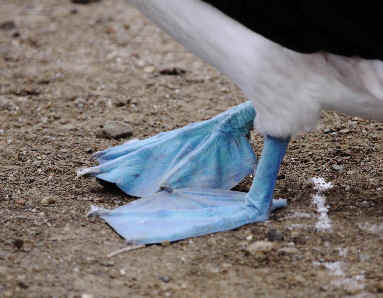
The blue
feet of the
Blue-footed Booby
Links:
A Narrative Relating to the FONT July 2013 Ecuador Tour
A List of Birds during the FONT July 2013 EcuadorTour
A List & Photo Gallery of Ecuador Birds, in 4 Parts
A List & Photo Gallery of South America Butterflies, in 5 Parts
Upcoming FONT Birding & Nature Tours in Ecuador
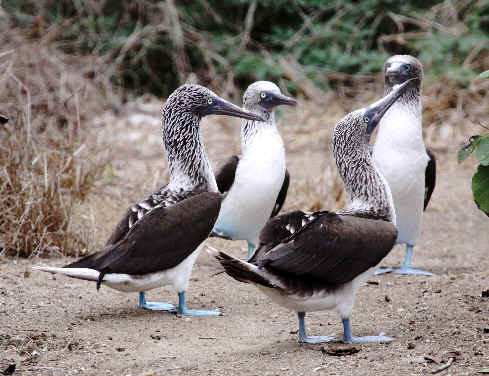
Blue-footed Boobies during our tour on the island
known as
"Isla de la Plata", or the "Silver island",
42 kilometers off the coast of Ecuador.
It looks as if these boobies are about to conduct a meeting.
Whatever they were doing, we certainly enjoyed watching them.
In the photo below, the male can be distinguished from the female.
The male has the smaller pupil, or the most yellow in the eye.
Also when we heard these birds, the sexes could be distinguished.
The males whistled. The females grunted or groaned.
Yes, that's true.
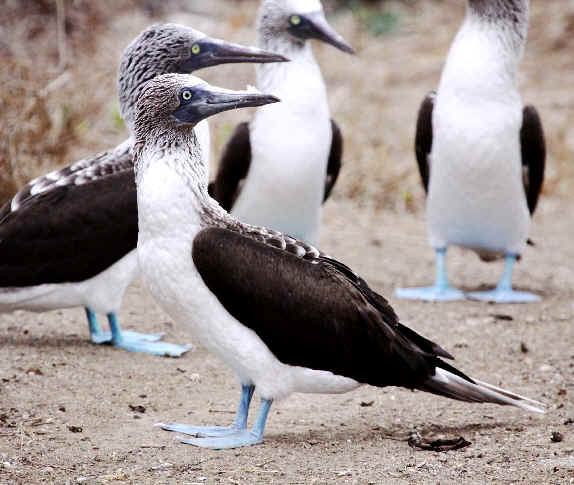
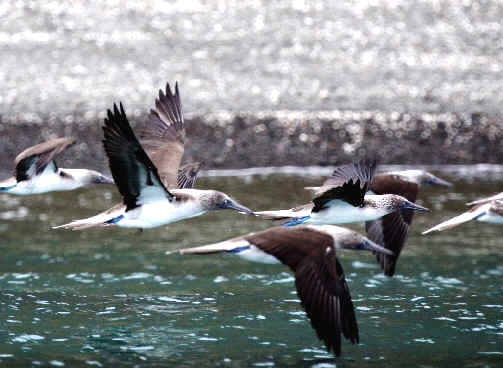
Blue-footed Boobies in flight
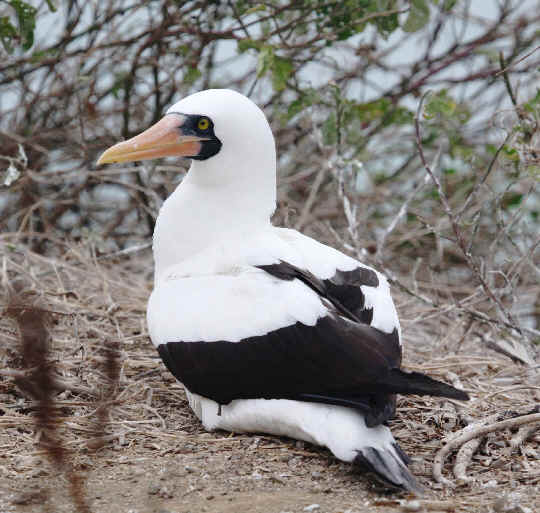
Above & below: Nazca Boobies
This species was split from the Masked Booby in 2000.
The Nazca Booby, of the eastern Pacific Ocean,
breeds at only a few places.
Mostly in the Galapagos,
but also on islands off Colombia and Mexico,
and on Isla de la Plata off the Ecuadorian coast,
where these photos were taken during our July 2013 tour.
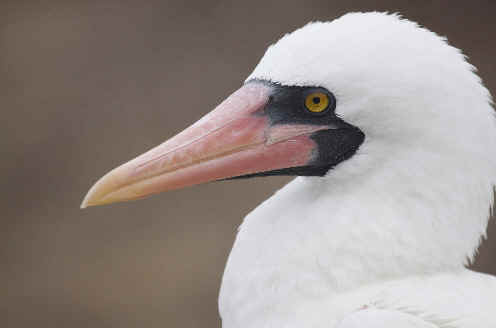
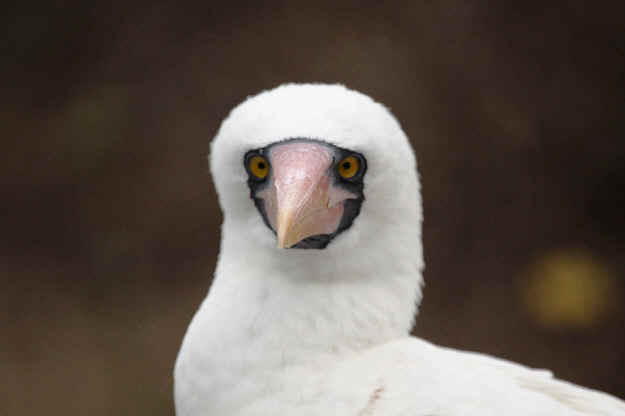
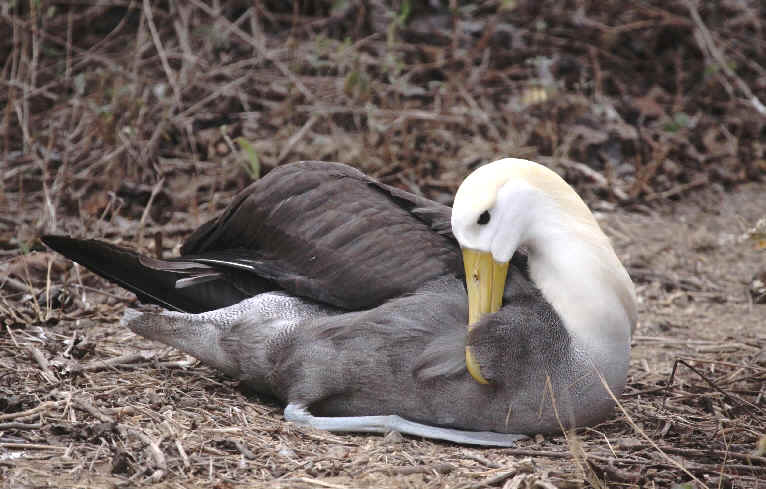
The Waved Albatross is now
classified by Birdlife International
as being a critically endangered species.
In the Galapagos, it breeds on only one island.
Outside the Galapagos, it also breeds on only one island,
Isla de la Plata.
But in July 2013, when we were on that island off the coast of Ecuador,
there were ONLY 2 pairs of these albatrosses nesting there.
We were so very fortunate to see this bird as we did.
It was one of the birds of the two pairs,
and behind that long blue foot,
and under that fine vermiculation in its plumage,
there was an egg!
As we watched this spectacular and rare bird,
we quietly kept our distance,
and the parent-to-be (hopefully)
did not mind us at all.
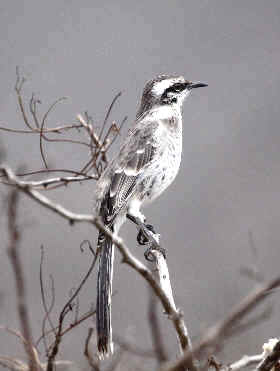
Just as there are mockingbirds on the Galapagos
Islands,
they are an avian feature on the offshore Ecuadorian island,
Isla de la Plata.
This Long-tailed Mockingbird on that island
is of a subspecies endemic to that one small island,
Mimus longicaudatus platensis.
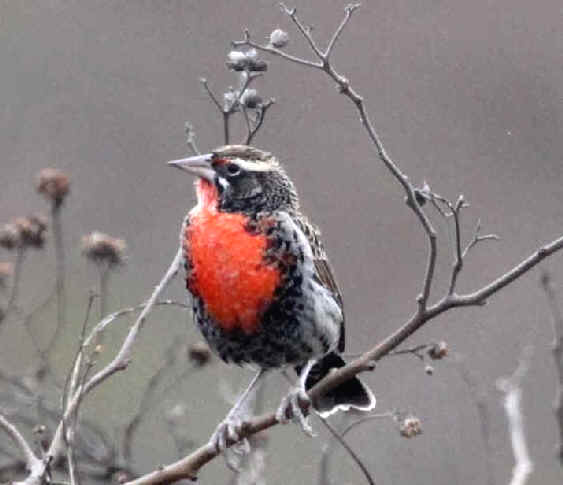
Above, a Peruvian Meadowlark,
also photographed on Isla de la Plata.
Other landbirds that we saw on Isla de la Plata
included the Short-tailed Woodstar (a hummingbird).
and the Gray-and-white Tyrannulet.
That little flycatcher is more readily seen
on that island than anywhere else.
Also there, not a "Galapagos Finch",
but the Collared Warbling Finch, was seen well.
As was the Southern Yellow Grosbeak in the photo below.
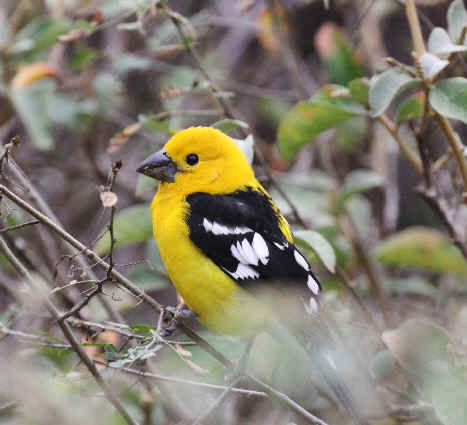
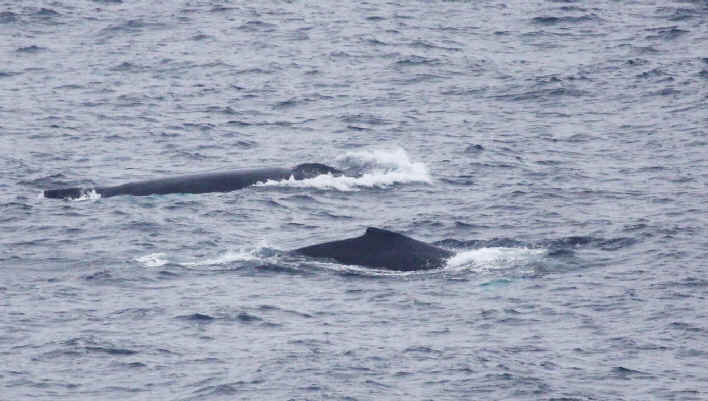
Seen from the island, Isla de la Plata,
were the two Humpback Whales in the photo above.
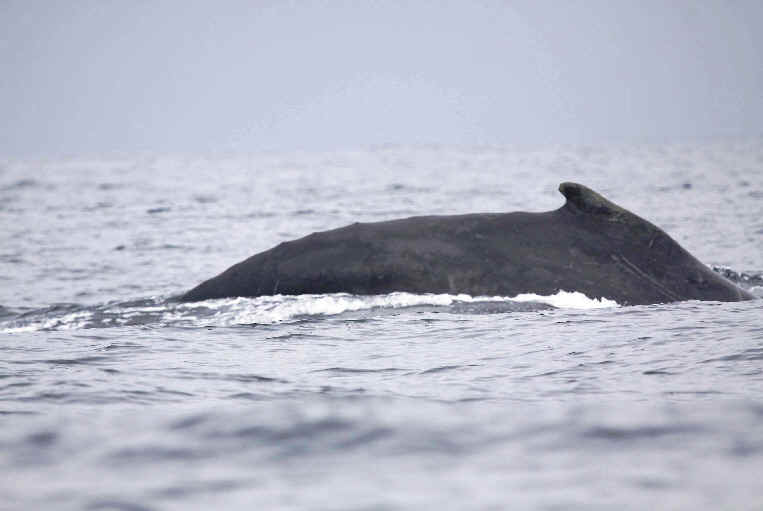
Above, from the boat on our
way to the island,
a Humpback Whale in its diving posture
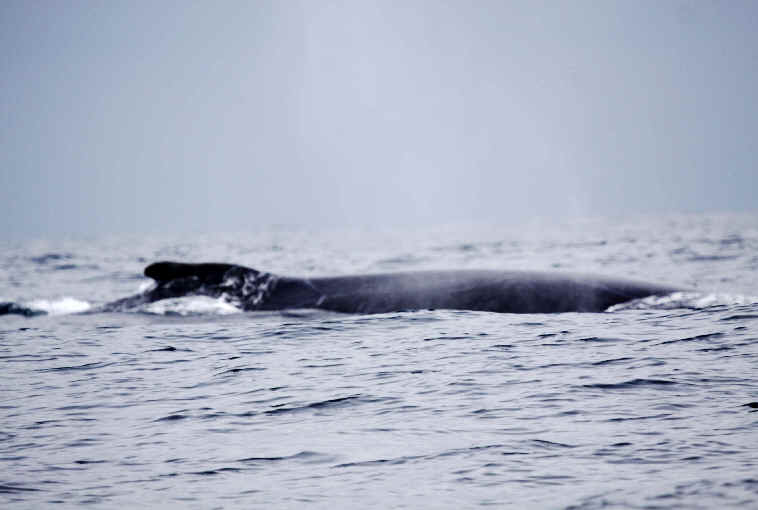
And, here, more of the Humpback Whale.
It is a large animal, reaching a length of over 50 feet,
and having a weight of more than 30 tons.
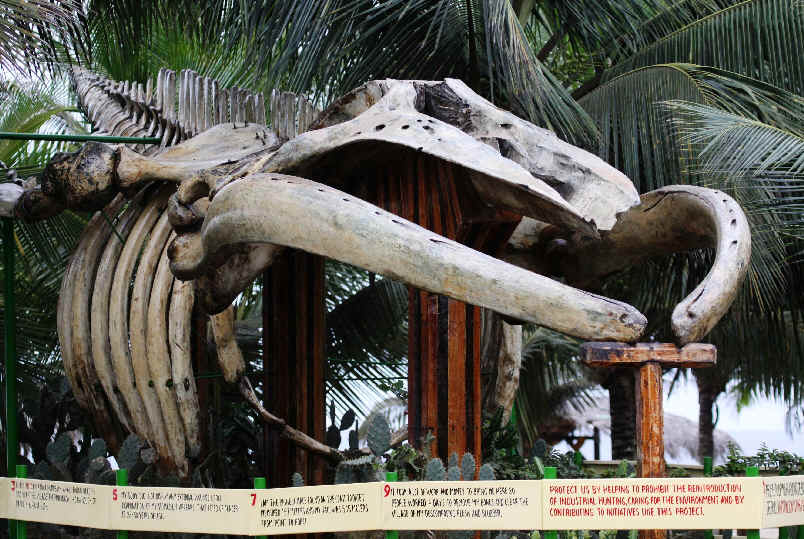
Onshore, between the hotel
where we stayed and the beach,
a skeleton of a Humpback Whale,
with a story in the series of photos below.
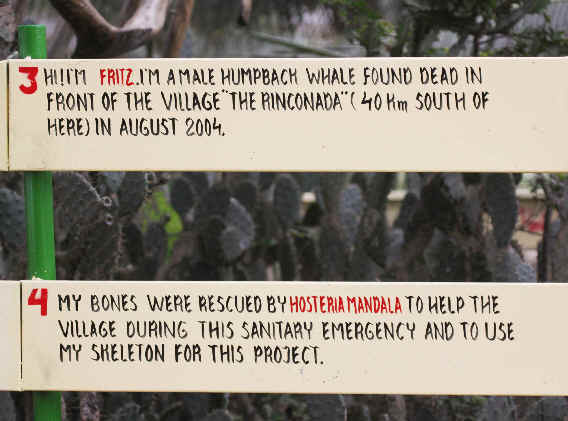
The Hosteria Mandala was the hotel where we stayed in Puerto
Lopez.
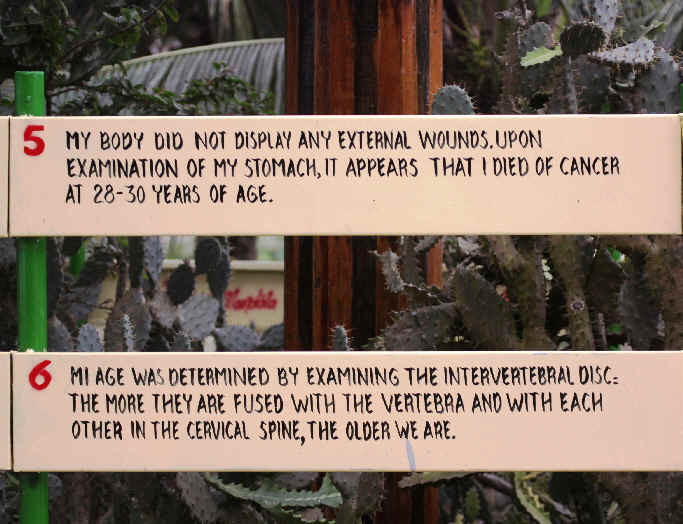
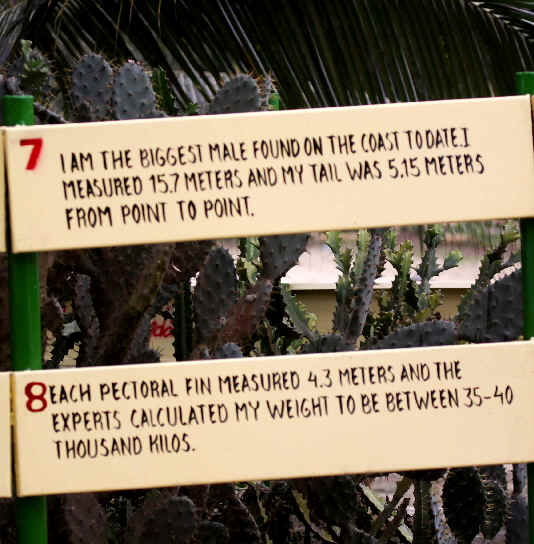
15.7 meters is 52 feet.
5.15 meters is almost 17 feet.
4.3 meters is over 14 feet.
40 thousand kilos is 44 tons.
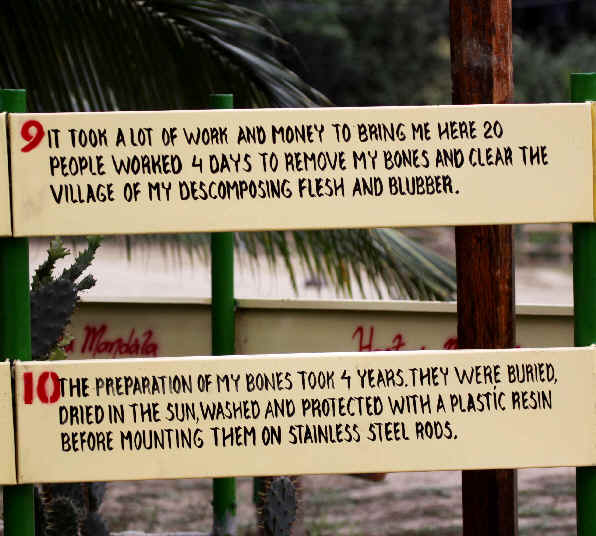
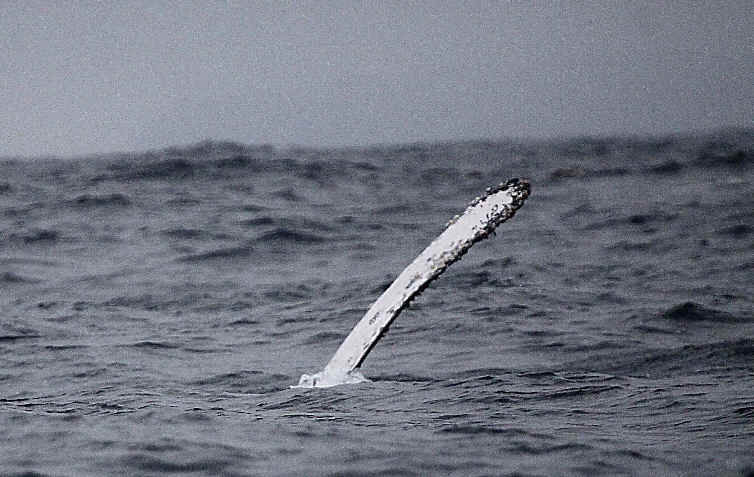
Above & below: the flippers
of a Humpback Whale
(referred to in #8 above as the "pectoral fins").
The Humpback Whale has two them, outrageously long,
resembling wings.
The flippers of the Humpback Whale grow to about 30 per cent
of the length of the animal.
They are typically up to about 4.3 meters, or nearly 15 feet, in length,
in most Humpback Whales,
including the skeletonized one referred to above.
During our July 2013 tour, we saw these big flippers in life,
as one of the Humpback Whales we saw engaged in
what is called "flipper-slapping",
that is slapping the water with one or both of its flippers.
In the photo below, the 15 foot-long flipper looks like
"a monster" of sorts rising out of the sea.
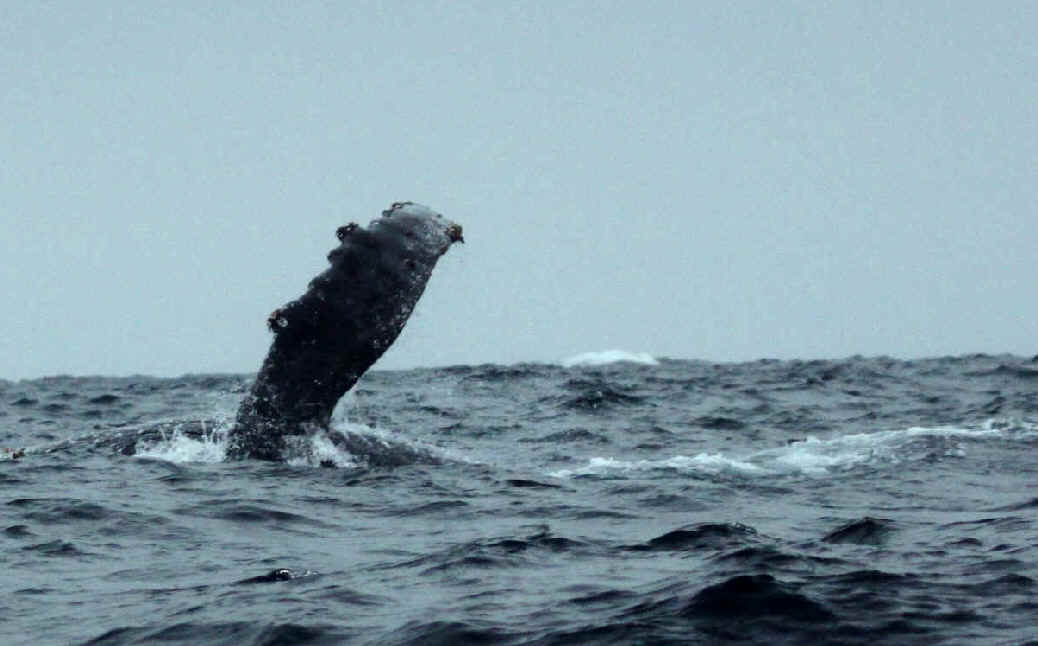
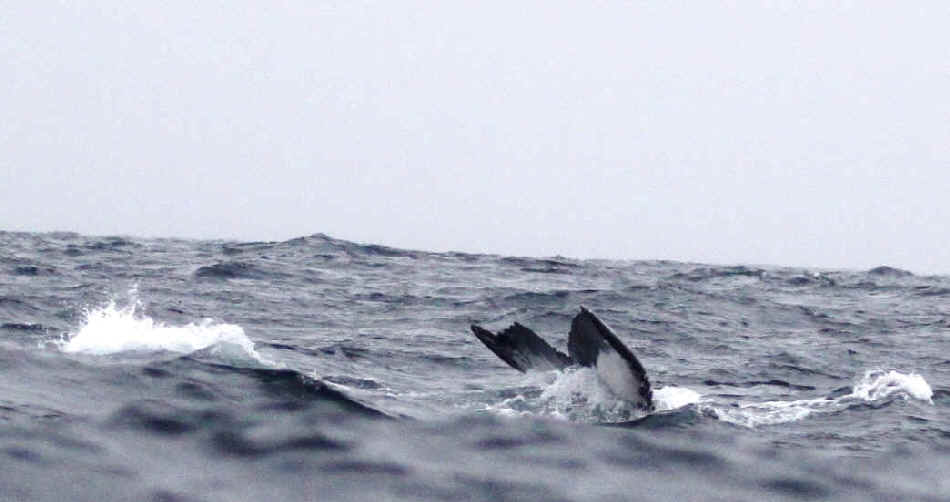
A Tail of a Humpback Whale,
as the animal dove to the depths below.
As noted above, a Humpback Whale tail
is as big as 5.15 meters, or nearly 17 feet across,
from point to point.
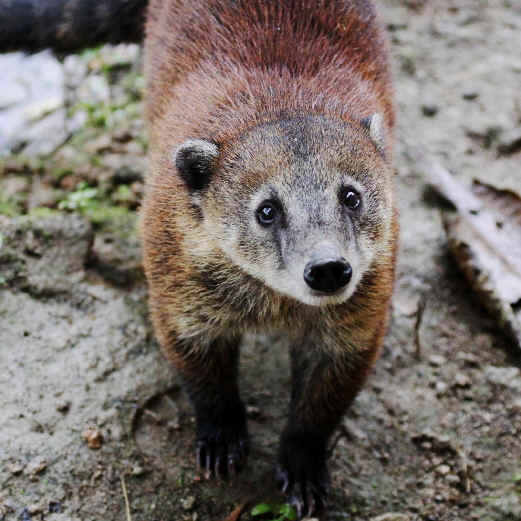
Back to mainland Ecuador,
one of the land mammals seen during our tour
was the White-nosed Coati.
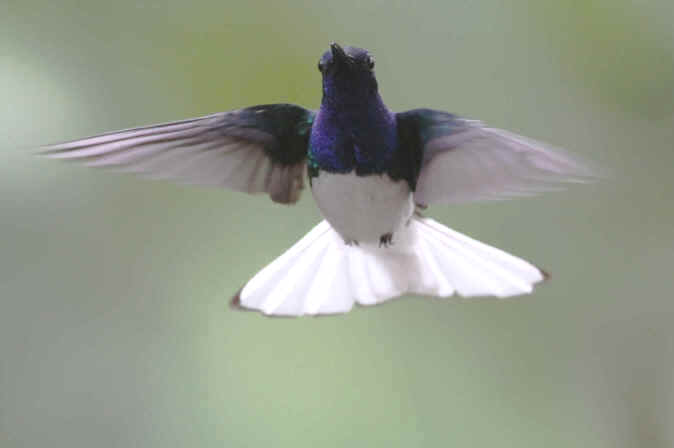
And back to birds, we saw at one place where we stayed,
many hummingbirds,
with at least 50 in view at once, and often more.
Among them, above & below:
the White-necked Jacobin.
The male, in these photos, is striking.
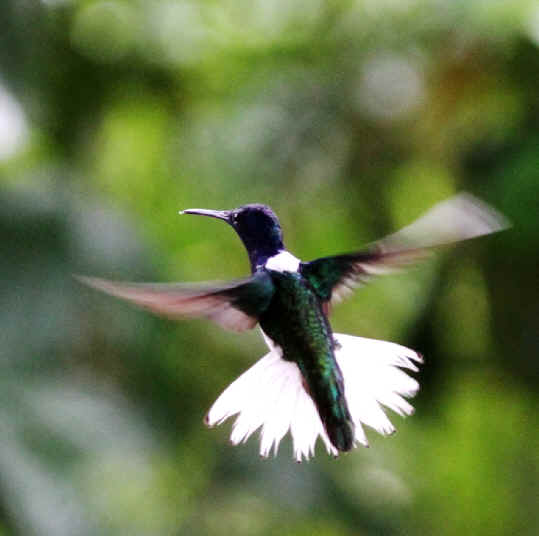
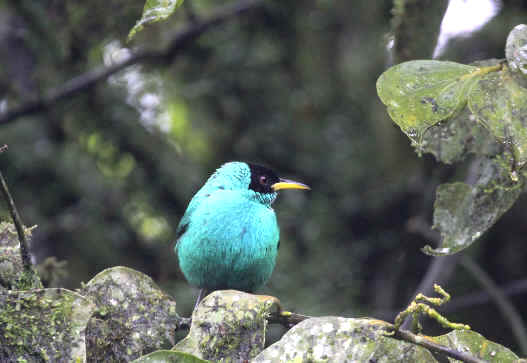
And adding color at that same place as well,
the male Green Honeycreeper
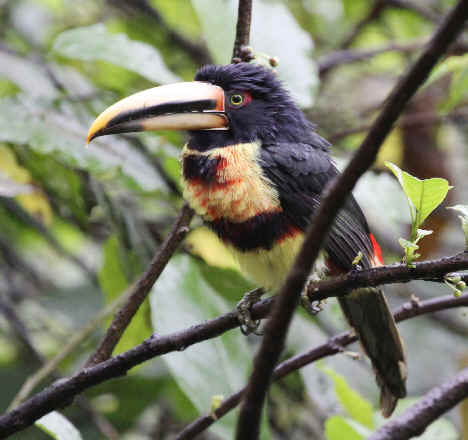
With more colors,
and there as well, a larger bird,
the Pale-mandibled Aracari,
one of the few bird species endemic to Ecuador.
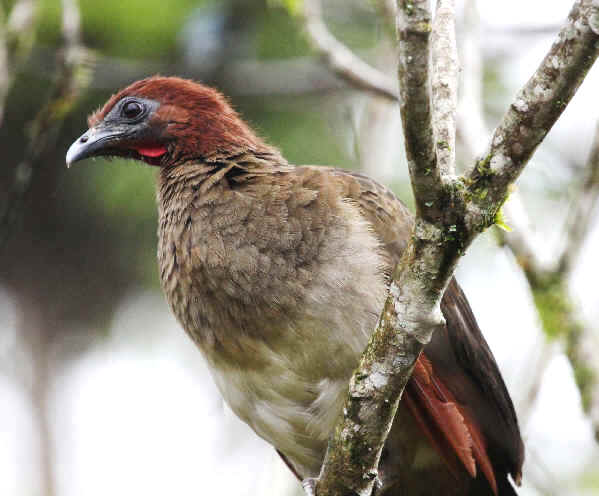
And an even larger bird, at
that same place,
the Rufous-headed Chachalaca
This bird was one of 7 found during our tour
that have been categorized as
"near-threatened species" in Ecuador.
Others were:
Pale-browed Tinamou, Pinnated Bittern, Gray-cheeked Parakeet,
Ecuadorian Plumeleteer, Emerald-bellied Woodnymph, Saffron Siskin.
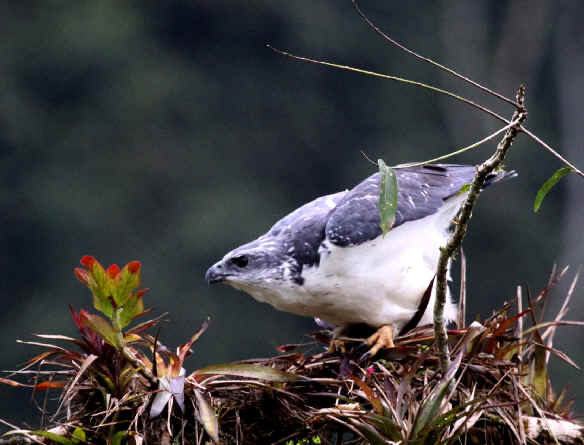
The Gray-backed Hawk of western Ecuador
is nearly endemic to the country,
and it is 1 of 2 birds during our tour
that have been categorized as "endangered species" in Ecuador.
The other was the Ochre-bellied Dove.
Two birds during our July 2013 tour have been categorized
as "critically endangered species" in Ecuador:
the Waved Albatross (pictured earlier in this feature),
and the Southern Pochard (referred to later).
Birds during our tour categorized as
"vulnerable species" in Ecuador were:
Crested Guan, Comb Duck (referred to later),
Black Petrel,
Snail Kite, Red-masked Parakeet,
Long-wattled Umbrellabird (pictured later),
Ochraceous Attila, Gray-breasted Flycatcher,
and Henna-hooded Foliage-gleaner.
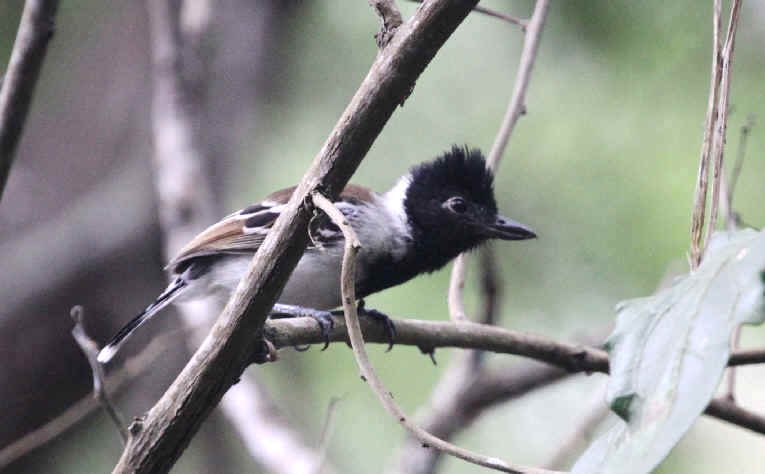
Another bird of western Ecuador, seen during our tour,
was the Collared Antshrike.
Above, the male. Below, the female.
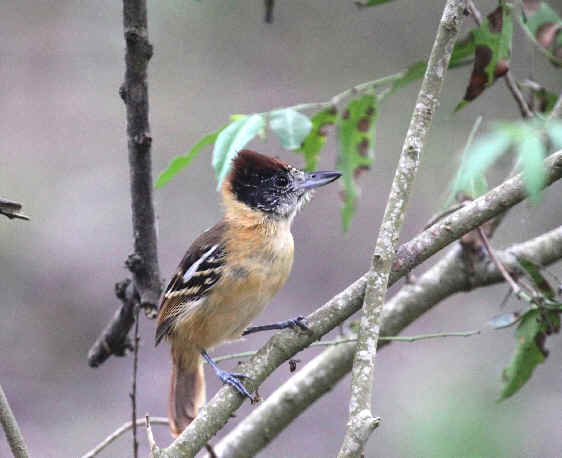
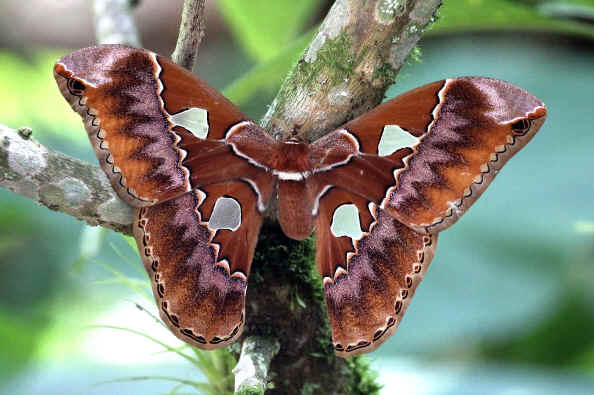
In southern Ecuador, during our July 2013 tour,
a large number of moths were seen.
During 2 nights, we saw
about a hundred different varieties,
but this very large and showy Orizaba Silkmoth
was seen during the day.
To see more:
Moths & Butterflies during the FONT July 2013 Ecuador Tour
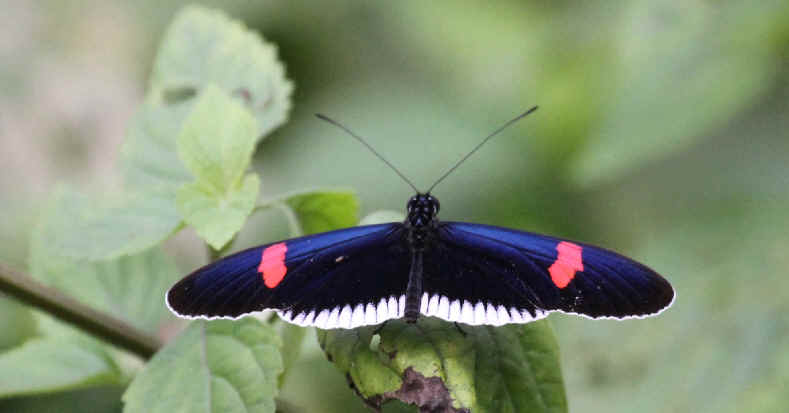
And here is one of the
numerous butterflies
seen during the tour.
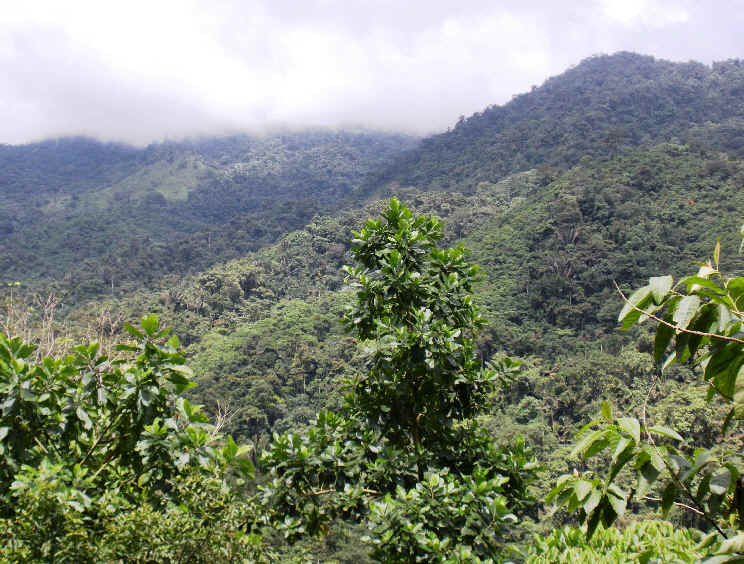
An area of forest where we birded in southern
Ecuador,
and where we saw the rare Long-wattled Umbrellabird (below)
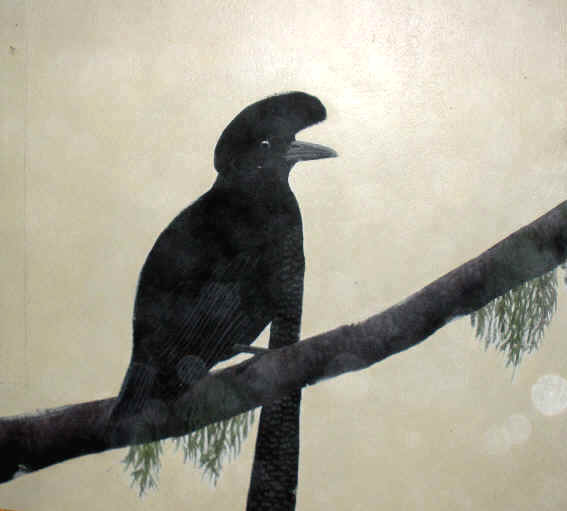
A painting of the Long-wattled
Umbrellabird
on the wall of the Umbrellabird Lodge, where we stayed.
When we saw a male of this species,
early one foggy morning,
the bird did its deep call,
sounding much like a foghorn.
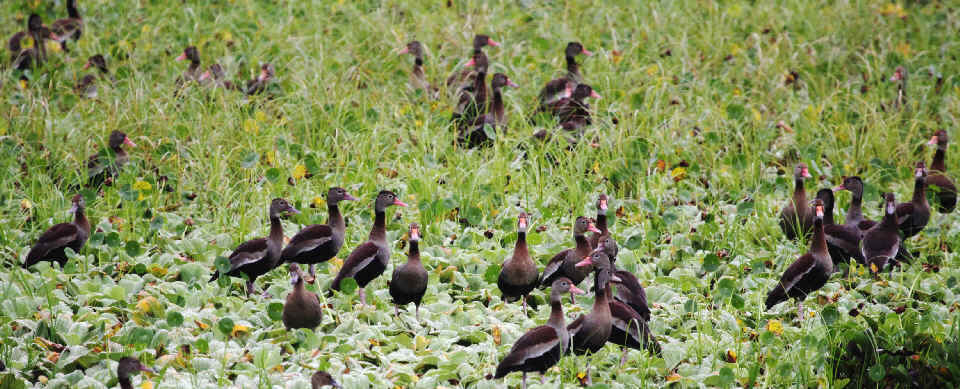
These birds were just some of
the many that were seen during our tour
at an extraordinary marsh in southern Ecuador.
Others included Spotted Rail (that was "spotted")
Pinnated Bittern (hardly so),
a pair of Southern Pochards, and hundreds of Comb Ducks.
The Black-bellied Whistling Ducks above,
were among the thousands we saw there,
along with also a nice number of Fulvous Whistling
Ducks.
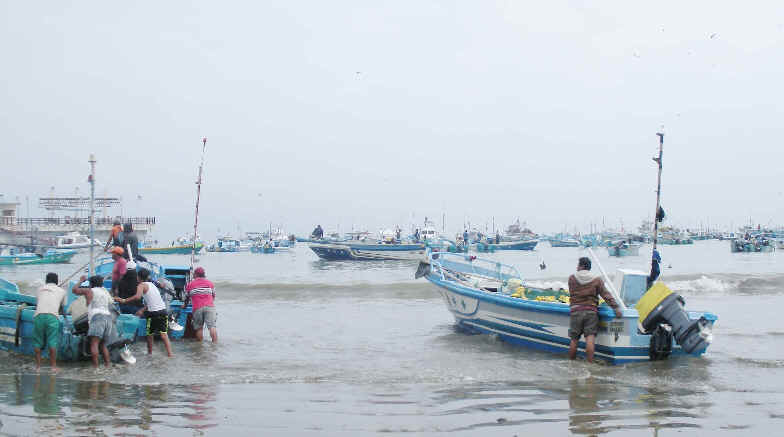
Fishing boats in the morning along the Ecuadorian coast.
We were on the beach early that day, prior to going to Isla de la Plata,
as the fishermen were bringing in their catches to sell,
with fish including wahoo, bonito, tuna, and marlin.
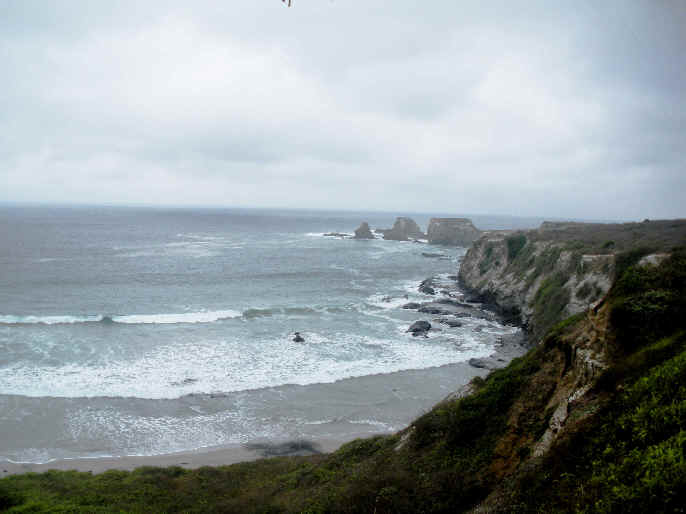
A view from where we walked on
Isla de la Plata,
the island we visited 42 kilometers off the Ecuadorian coast.
One can not be much further west
on the continent of South America.
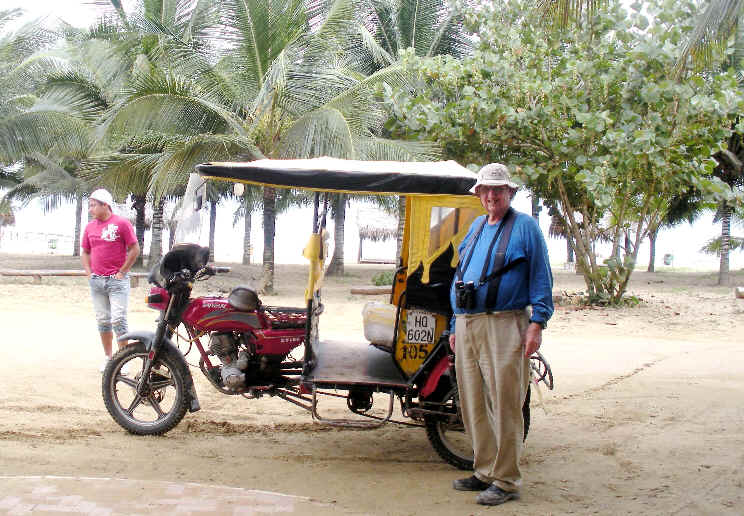
As we traveled during our
Western and Southern Ecuador Tour
in July 2013,
we were on planes, on a boat, on foot,
in a 4-wheel drive SUV, in a pick-up truck,
and in something a bit out of the ordinary,
a taxi attached to a motorcycle,
a principal mode of transportation
in one of the small coastal Ecuadorian towns where we stayed.
Here, tour participant Fred Lesser poses with the taxi,
odd to us, but commonplace to the inhabitants of Puerto Lopez.
Top of Page